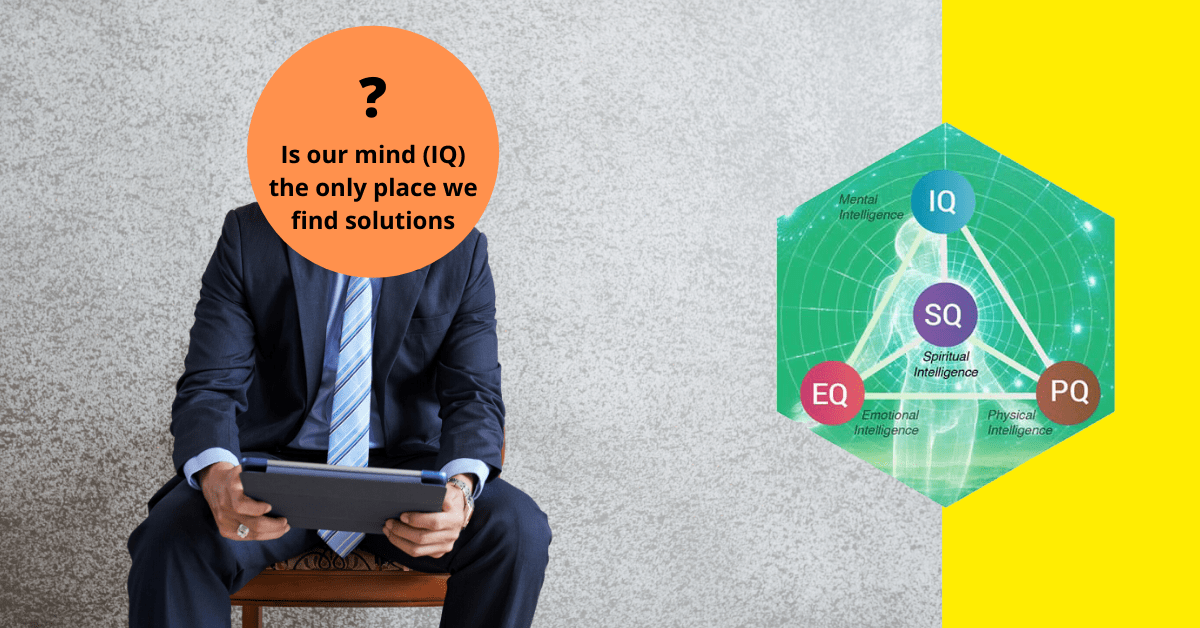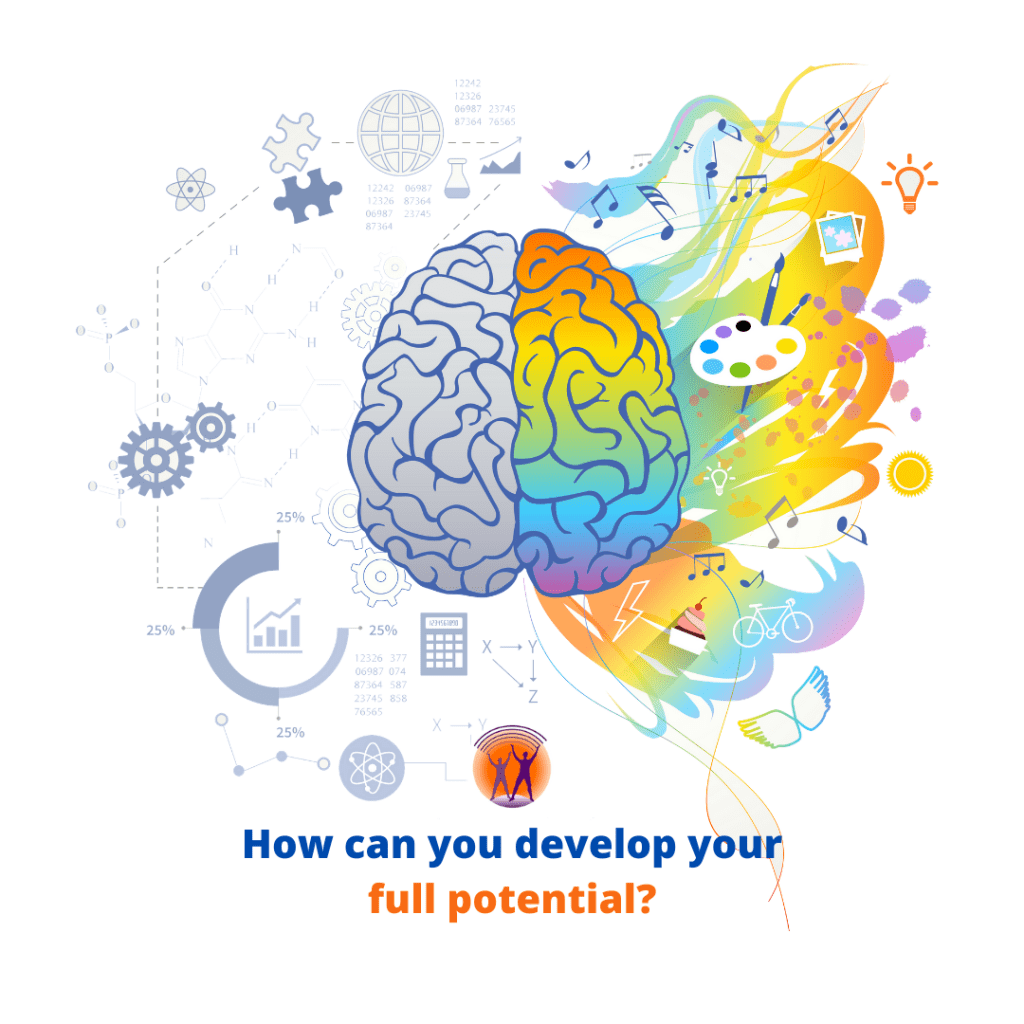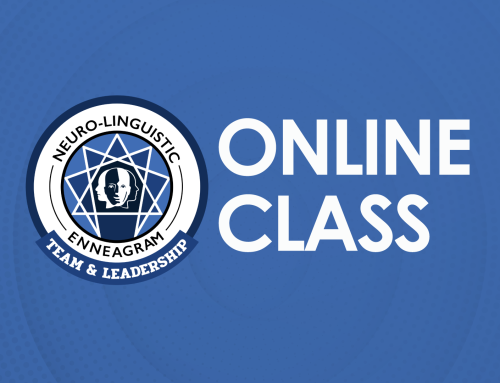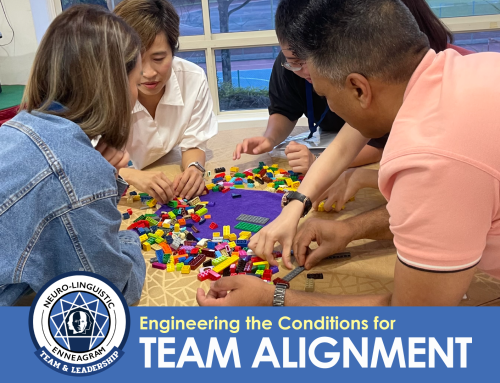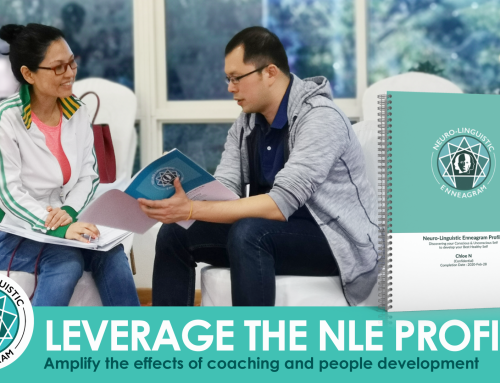The concept of Multiple Intelligences came from Professor Howard Gardner. In 1983, in his book Frames of Mind, he proposed eight intelligences, namely naturalistic, bodily-kinaesthetic, visual-spatial, logical-mathematical, verbal-linguistic, interpersonal, intrapersonal and musical. He was against labelling people with a specific intelligence and promoted the idea that everyone has degrees of ability in all the different intelligences, and each can be developed.
The idea of applying Multiple Intelligences in coaching came to me in 2011.
I had realised that many of my “Aha!” moments in coaching did not occur while we were talking or thinking, but rather while doing something that wasn’t related to the problems we were tackling, while feeling and relating to a particular emotion, or while aligning ourselves to our highest purpose. The most profound moments in our lives often don’t come when someone asks us a question, but from the intelligence of our body (PQ), heart (EQ) and connection to something bigger than ourselves (SQ). By coaching the whole person, we can then develop their full potential.
Asking good questions is a limiting way of producing results with clients.
To a large extent, the obsession of the coaching community with “asking good questions” is attributed to our educational system, which is focused on intellectual prowess, praising and encouraging emotionless deductive and/or inductive logic and verbal articulation.
To produce transformational results in people, there are several invisible factors of coaching to facilitate. Below video is an explanation.
Intelligence in school and society are usually measured with I.Q. tests.
However, we all know intelligent people who do not score highly on I.Q. tests; here’s a case in point. In the 1920s, Lewis Terman went on a search for the brightest kids in California by administering standardised IQ tests to thousands of children. Two young boys, William Shorkley and Luis Alvarez failed to achieve a “genius” grade of above 140, yet, later in life, they earned their PhD’s and won the Nobel Prize in Physics in 1956 and 1968. Both geniuses scored poorly in the “verbally-loaded” I.Q. used by Terman, but excelled in spatial intelligence. In other words, IQ Tests measure primarily verbal-linguistic and logical-mathematical intelligence, and even if people are gifted in other intelligences, they are still deemed as “unintelligent.”
What this proves is that our ability to solve problems and create new solutions (a.k.a. creativity) does not solely come from mental intelligence, but can come from other forms of intelligence which are inherent in us, and which need to be acknowledged and developed.
100% of a typical coaching session is sedentary.
Typically, the coach and the client sit comfortably, talk, ask and answer questions. Through creative questions, the coach challenges the client to think of “outside-the-box” solutions and gets them to commit to a course of action. A few “uncommon” coaches use visualization to increase their client’s motivation and help them see their solution, but rarely do they use the “visual-spatial” intelligence to help them create one. The activities described so far largely fall within the mental realm. A client’s emotions may be triggered during the questioning process, but very few coaches know how to pull out solutions from such responses.
When we are busily thinking, we become less aware of our emotions.
According to Jaak Panksepp, who spent 50 years in the field of Affective Neuroscience, when a person’s cognitive regions of the brain are active, there is less activity in the affective regions of the brain and vice-versa; i.e. when we are thinking, we are less aware of our emotions, and when we are caught up in our emotions, we are less resourceful with our thinking.
Simply asking questions keeps the client’s mind active.
To help clients tap into the intelligence of their emotions, we need to allow them time to get in touch with these, hold moments of silence with short, clear instructions, and help them “reconfigure” their physiology and breathing; sometimes, this is all that it takes for a client to create their own solutions. Mental intelligence is important, but a more integrative approach can yield faster and more ecological results.
Physical and emotional states share the same neural pathways.
This discovery was made in 2013, in the study of alexithymics (which tackles the inability to identify and describe emotions in the self) by the Japanese Kano and Fukudo, who used the most advanced scanning technologies to achieve these findings. From these, the scientists concluded that awareness of emotions requires interoception (a sense that allows one to understand and feel what is going on inside one’s body).
Researchers agree that when people gain awareness of their body, they become more aware of their emotions, therefore paying attention to one’s internal and external bodily sensations, rather than just rationalizing about them, can greatly help one tap into the intelligence of one’s emotions.
Somatic Intelligence, a rapidly growing field, is also founded on the notion that people can draw information from physical movements, stretching and breathing, and other bodily sensations. The body has its unique way of learning and responding to stimuli without any input from the brain.
The person we are, how we respond to the world is recorded in the living tissues of our body.
According to Dr Thomas Lewis, the implicit memory (the body’s memory system) is the brain’s sole learning process in the early years of life. Through the process of long-term potentiation, the neurons associated with emotional and social learning undergo physiological changes that prime them to be more likely to fire.
By developing our somatic/physical intelligence (PQ), we can:
i) manage our on-going mood and handle strong emotions resourcefully;
ii) manage strong physical sensations to increase choice and responsiveness;
iii) rapidly connect newly learned information to our body for quick and smooth execution;
iv) use sensory experience to provide accurate and valuable information about the environment and the world;
v) more confidently use our “gut feeling” to navigate through challenging and ambiguous situations, and much more.
These skills are mastered through physical simulation, a reconfiguration of our posture, gestures, stance, breathing and movement, as well as sensing and shifting our internal body states.
It is important to help clients develop “psychological maturity” in the way they see themselves and their relationship to the world.
In doing so, they begin to redefine their values and therefore their priorities in life. With the development of maturity, people acquire certain knowledge, capabilities and skills. They fundamentally respond to their daily demands differently, handle people differently and show greater creativity in managing challenging situations. They also possess greater motivation and commitment, understanding and patience, courage and optimism.
To understand a person’s level of psychological maturity or development, we can consider them as different levels of self-mastery, such as in the framework of Maslow’s Hierarchy of Needs.
A shift to a higher level is analogous to a paradigm shift: the structure of our old worldview disintegrates and the new worldview is formed and strengthened. The higher level subsumes the lower levels, but the latter remain available to a person and can be reactivated.
Maslow’s highest level of human development is not self-actualization.
The “Sixth Level” of need (published 1969) is Self-Transcendence. The first four levels (physiological, safety, belonging and esteem) are known as Deficiency Needs (to avoid pain-related feelings) and Self-Actualization is known as a Growth Need (to manifest one’s fullest potential).
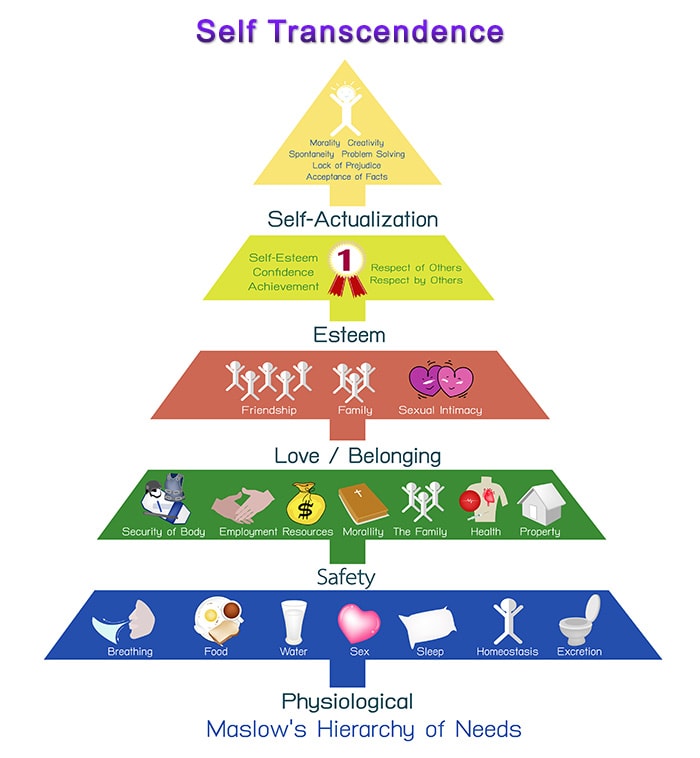
Among Self-Actualizers, there are a rare few who move on to Self-Transcendence.
Here, they often have transpersonal experiences, they transcend their own needs and possess the genuine desire to serve others; they have strong feelings of union with other human beings, animals, nature and the cosmos. This level may be called the Being & Serving Need: one’s daily way of behaving & relating becomes the end rather than the means.
Personal & spiritual development are different junctures of the same spectrum.
This is what the “updated” understanding of Maslow’s Hierarchy of Needs clearly shows.
If people embrace this spectrum of human development, then spiritual intelligence is a conscious development of one’s awareness to master one’s Deficiency, Growth and Being-Serving Needs. As one masters one level to a sufficient degree, one has access to the strengths and weaknesses of the previous levels, and at the same time—glimpses of the possibilities of the next level.
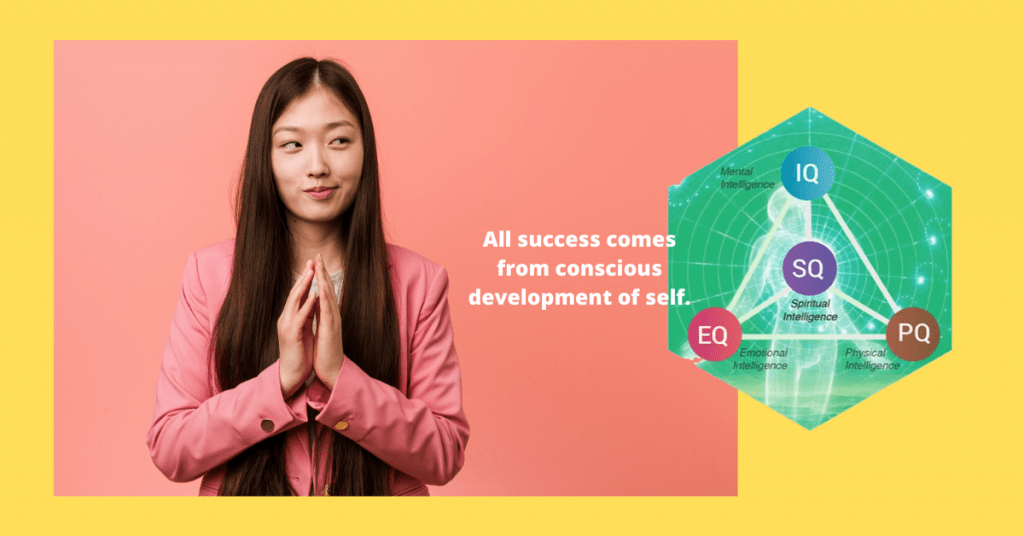
When one understands this framework, evolving from the Physiological/ Survival level to the Self-Transcendence/Spiritual level, a new appreciation of spiritual intelligence can emerge. In moving from a fear-driven motivation, to that of manifesting one’s highest potential and serving others, one has to transform one’s cognitive (IQ), affective (EQ) and conative (PQ) abilities.
Based on the above, Spiritual Intelligence (SQ) could be defined as a state of being where one can connect and draw wisdom from subtler systems, process a higher degree of complexity and manage intense situations with deep emotional and physical mastery. And this isn’t achieved through more knowledge, skills and tools, but through one’s way of being.
Unlike IQ, EQ, and PQ, SQ cannot be mastered in the classroom.
It takes place in one’s daily life, as a practice, where one’s routine is examined and purposefully designed to facilitate learning and mastery.
There are several scientifically validated adult development frameworks that have decades of data collection and analysis, which help a person to locate their current level of self-mastery and pinpoints specific areas of mental, emotional and physical improvement.
The vital task for me is to incorporate these adult development frameworks into the system and models of NLP. This provides useful information to people about designing their daily Spiritual Practice (e.g. the art and science of setting intentions, a simple, yet powerful process that helps people align their Spiritual, Emotional, Mental and Physical Intelligences to promote congruence and flow).
Multi-Intelligences coaching asserts that unless one is able to align one’s knowledge to one’s emotions, bodily actions and sense of purpose and meaning, one does not have competence and cannot achieve lasting change. It therefore firmly states that effective coaching is not just simply “talking and thinking” (IQ); it involves tapping into and mobilising one’s physical (PQ), emotional (EQ) and spiritual (SQ) intelligences to produce ecological and lasting results.
If you want people to enjoy sustainable results from your coaching, asking them questions is not enough.
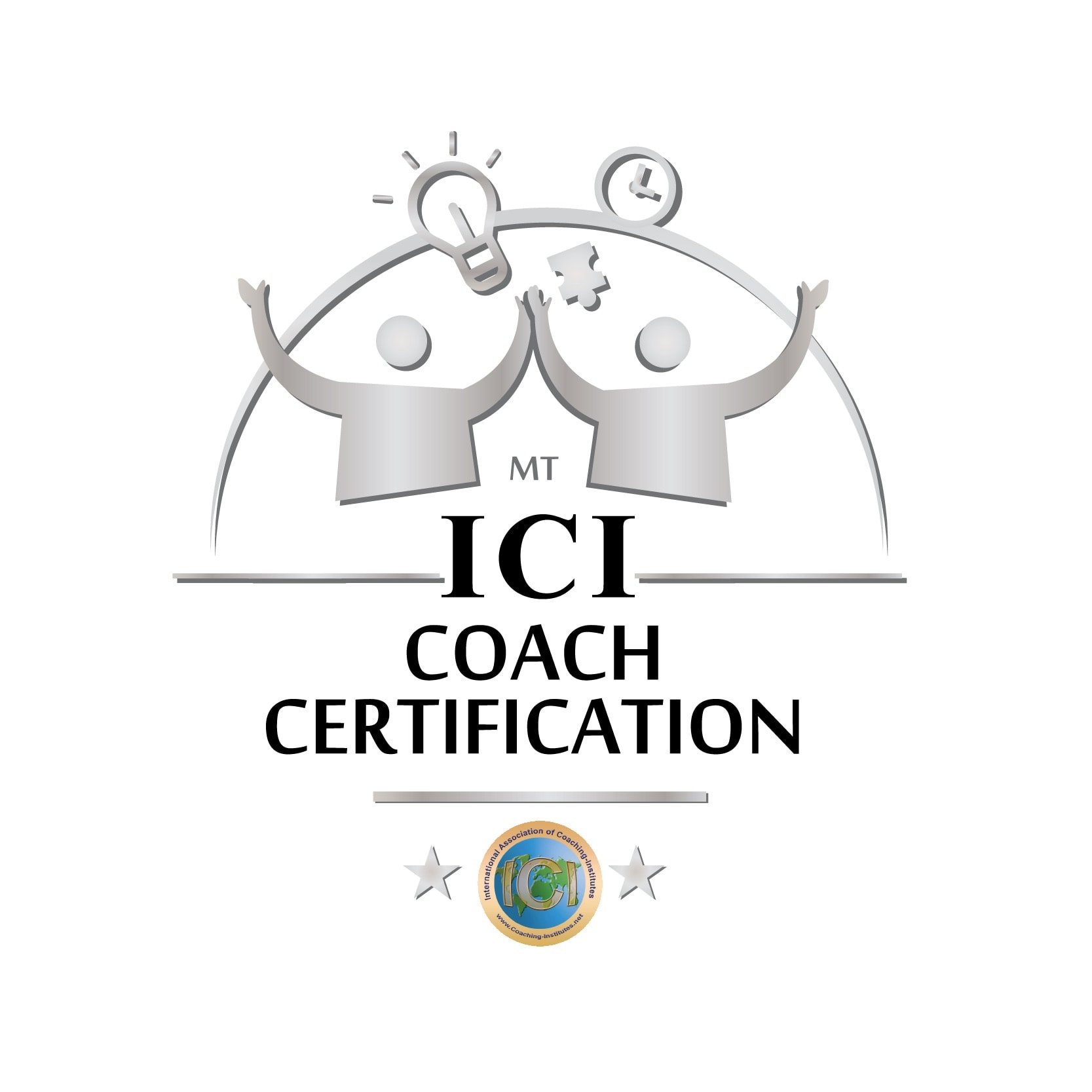 Coaching beyond logic is helping people develop an inner alignment of their body, mind, emotion and spirit so that they are no longer fighting within themselves; they are congruent to take the next step forward.
Coaching beyond logic is helping people develop an inner alignment of their body, mind, emotion and spirit so that they are no longer fighting within themselves; they are congruent to take the next step forward.
We are always happy to discuss our work in Multi-Intelligence-NLP, and how can you apply it to get results with people. We encourage you to book for a complimentary 1:1 Course Consultation. Once you’ve learned MI-NLP, your coaching is never the same again, and your clients will really thank you.
Put yourself on the Waiting List for the next intake of our Life & Executive Coach Certification Programme, accredited by ICI, Germany.
[inf_infusionsoft_inline optin_id=”optin_2″]

